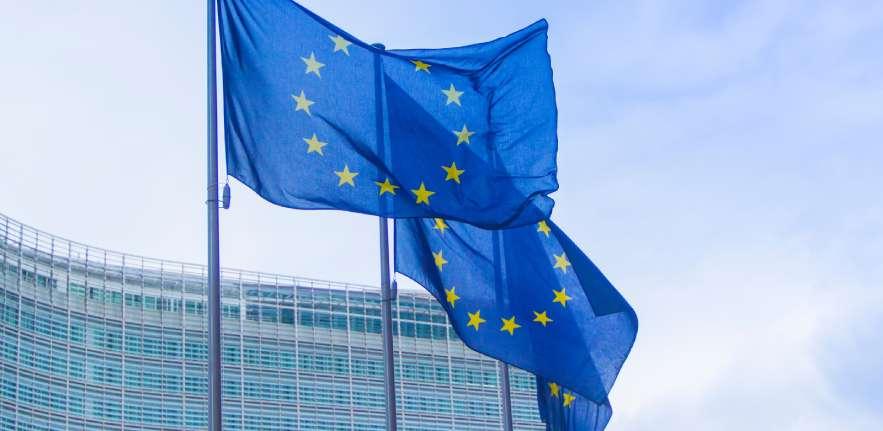
22 June 2023 – CLG Europe has submitted a response to the EU’s public consultation on the 2040 target, calling for a net 90% reduction in GHG emissions (relative to 1990 levels), which includes no more than 8-10% of carbon removals.
In parallel to the implementation of measures to achieve its 2030 NDC, the EU has started the process of setting its 2040 Nationally Determined Contribution (NDC). This constitutes a critical milestone that will determine the EU’s ability to stay on track towards climate neutrality by 2050.
The public consultation was open by the European Commission to allow evidence and feedback to be collected from stakeholders on the EU’s future climate ambition and its challenges and opportunities for all sectors of the economy. Alongside other responses, CLG Europe’s feedback will enrich the Commission’s assessment of a suitable 2040 climate target, inform the analysis of the sectoral transformations needed to meet the target on the way to achieving climate neutrality by 2050, and provide input on the possible evolution of climate policy instruments beyond 2030.
CLG Europe called on the EU to set a credible and ambitious target for 2040. It stated that this target should be science-based, present a proportionate response to the climate, nature, and energy crises, be consistent with industrial and circular economy objectives, and ensure a just transition to climate neutrality.
Based on current analysis, CLG Europe supported a target of net 90% reduction in GHG emissions (relative to 1990 levels), which includes no more than 8-10% of carbon removals. This target represents a level of ambition aligned with the objective to limit global warming to 1.5°C degrees. It also reflects the urgency and benefits of near-term action, enabling steep emission reductions before 2040.
Alongside the summary feedback, CLG Europe submitted a six-page response to the consultation outlining ‘why the EU needs to set an adequate 2040 target’, ‘why we are calling on the EU to set a 90% target’, ‘the guiding principles to achieve the 2040 target’, and ‘how can businesses practices support an ambitious 2040 target. CLG Europe’s full response can be found at the bottom of this page: Feedback from: CLG Europe (europa.eu)
The key principles are summarised below:
- The target can be achieved with currently available technologies and without disruptive behavioural changes and short-term demand destruction. However, it relies on the successful implementation of the Fit for 55 Package, the EU achieving 55% emission reductions by 2030 and better alignment with industry, nature and circular economy policies.
- Businesses are already taking action to decarbonise their operations and value chains, by or before 2040, by switching to low carbon energy, transitioning to electric vehicles and developing low carbon materials. These practices underline the private sector’s willingness and efforts to support the implementation of ambitious climate targets.
- In a context of rising international competition, the 2040 target should enable the EU to position itself as a leader in the race to reduce emissions globally, using its influence to call on others to cooperate towards a climate neutral future, as well as in global markets in business sustainability and innovation.
- An effective 2040 target can accelerate the energy transition by supporting faster phasing out fossil fuels, electrification and the roll out of energy efficiency measures. Policies to achieve the target must be aligned with efforts for industrial decarbonisation to harness the benefits of competitive sustainability and circular economy.
- To retain the support from the general public, the benefits of policies to achieve the transition need to be clearly communicated, avoid adverse social impacts and ensure a just and fair transition for all sectors.
- Synergies between climate and nature objectives should also be carefully considered. Businesses are increasingly aware of the huge risks of nature degradation and that nature restoration and land use will play a key role in increasing the EU’s ability to mitigate climate change through nature-based solutions. The target should create a clear signal to businesses and national governments that nature-based initiatives are integral to the EU’s climate neutral economy ambitions. Emissions from the agriculture sector will also need to drop significantly.
- Investment in carbon removals is important to enable negative emissions after 2050. However, due to risk relating to cost, scalability and the vulnerability of any form of carbon sinks to the impacts of climate change, heavy reliance on carbon removals to achieve the 2040 target should be avoided.
- EU funds and national budgets should be earmarked to a much bigger extent for the implementation of the EU’s climate, energy transition and nature objectives. Funding instruments should be used to stimulate public and private sector investments in the green transition and reward the transformation of the economy towards net zero and fairer societies.
- The transition will impact all EU citizens. A 90% target by 2040 will send a clear signal to businesses and society on the actions to take and investments to make to bring together climate, energy, biodiversity, social, competitiveness and economic benefits to ensure Europe’s resilience and a prosperous future for its people.




